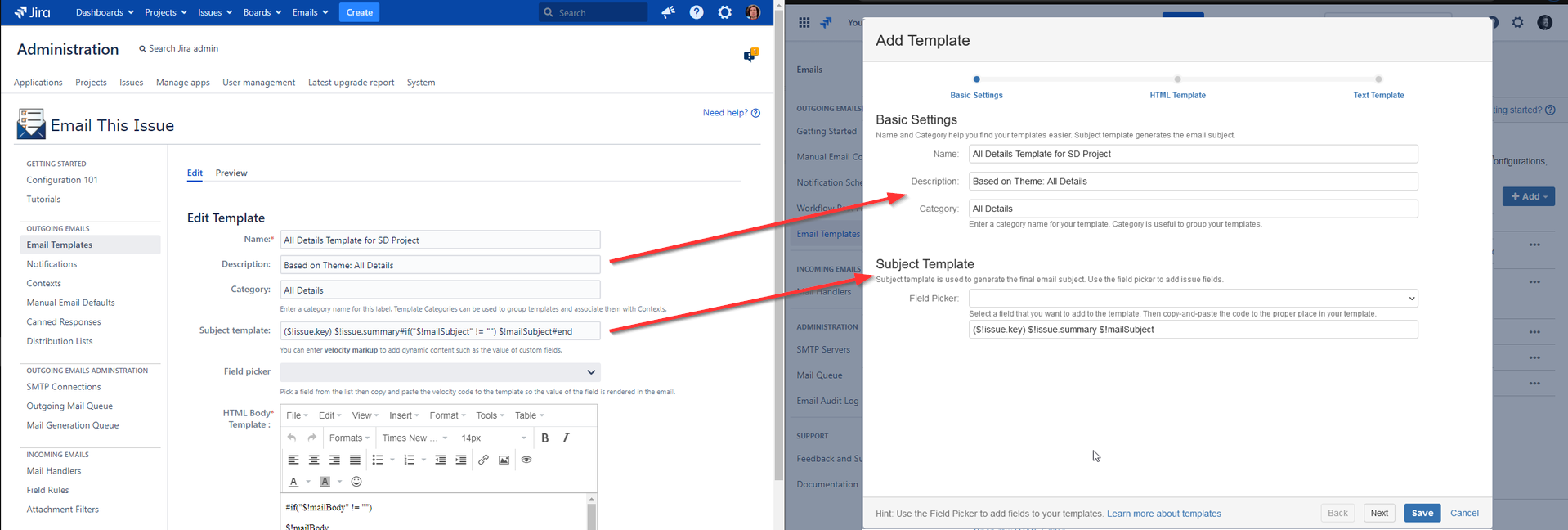...
Version
...
Effective period
...
Changes
...
Note
...
v1
...
2021.05.07-
...
Initial version
...
Image-based guide, full user guide in progress.
The below table shows the difficulty of the migration process from server to cloud, the status of the migration functionality and how time-consuming it is to move configurations from server to cloud.
Please note that these estimates may vary and depend on the number of settings you need to migrate.
...
Difficulty
...
Time consuming
...
Status
...
| Status | ||||
|---|---|---|---|---|
|
...
| Status | ||||
|---|---|---|---|---|
|
...
| Status | ||||
|---|---|---|---|---|
|
Migrating templates basically just copy-pasting their content. Repeat this for all of your templates.
...
If you using advanced features such as macros on Server (Velocity Context in Email Rendering ) , check the available macros on Cloud:
In the case of HTML templates, we suggest that you open the HTML source of the Server template (open it using “Edit in HTML”) then copy-paste the HTML code in Cloud using the “Open raw HTML Editor“ feature.
Cloud Email Templates documentation: Customizable Email Templates
...
This section provides information on how to migrate email templates from Server to Cloud.
On the Server interface, display the email template you want to migrate as follows:
Select Email Templates under the OUTGOING EMAILS section of the sidebar.
Click the three dots next to the template you want to migrate and select Edit. Note that in case of migrating HTML templates, we suggest that you open the HTML source of the Server template by choosing Edit in HTML, then copying and pasting the HTML code to the Raw HTML Editor on Cloud.
In a separate browser tab, log in to the Cloud interface and migrate the basic template settings as follows:
Select Templates under the EMAIL CONTENT menu item of the Outgoing Mails configuration tab.
Click Add and select the Empty theme for your new template.
Copy and paste the the content of the following fields from the Edit Template panel on Server to the Add Template panel on Cloud as shown in the image below:
Name
Description
Category
Subject template
Migrate the HTML body template as well as follows:
Click Next on the Add Template panel.
Click Open raw HTML Editor on the Add Template panel on Cloud.
Copy and paste the content from the HTML Body Template field of the Edit Template panel on Server to the Raw HTML Template editor on Cloud as shown in the image below:
Click Save in the Add Template panel of the Cloud interface.
Repeat this procedure for all your email templates.
| Tip |
|---|
Your email templates are migrated from Server to Cloud. |
Note: If you’re using advanced features on Server, such as the macros described in Velocity Context in Email Rendering, make sure to check the available macros on Cloud (see Velocity Context for Templates).
| Info |
|---|
For more information, see: Server documentation: Email Templates Cloud documentation: Customizable Email Templates |

